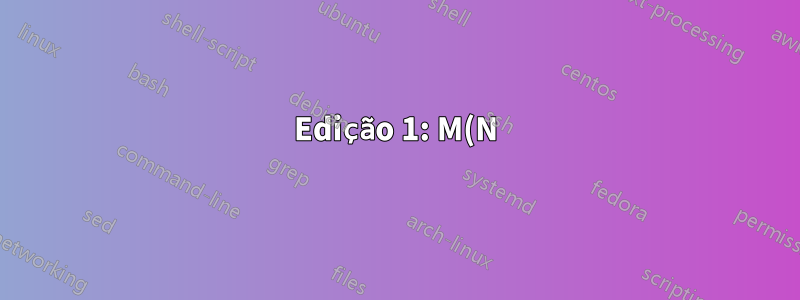N%C3%93S.png)
Atualmente estou migrando de xltabular para tabularray. Como parte disso, quero adaptar meu estilo de glossário personalizado para Lista de Símbolos e Lista de Abreviações (mesmo estilo).
Este é o meu código antigo:
% tables
\usepackage{booktabs}
\usepackage{multirow}
\usepackage{xltabular}
\usepackage{tabularray}
\addto\captionsngerman{
\DefTblrTemplate{contfoot-text}{default}{Fortsetzung auf der n\"achsten Seite}
\DefTblrTemplate{conthead-text}{default}{(fortgesetzt)}
}
% glossaries
\usepackage[
abbreviations,
nonumberlist,
record,
symbols
]{glossaries-extra}
\GlsXtrLoadResources[
src=glossaries,
not-match={entrytype=symbol}
]
\GlsXtrLoadResources[
selection=all,
src=glossaries,
type=symbols,
match={entrytype=symbol}
]
\newglossarystyle{customlong}{
\setglossarystyle{long}
\renewenvironment{theglossary}{\xltabular{\textwidth}{llX}}{\endxltabular}
\renewcommand{\glossentry}[2]{
\glsentryitem{##1}\textbf{\glstarget{##1}{\glossentryname{##1}}} & \multicolumn{2}{X}{\glossentrydesc{##1}}\\
}
\renewcommand{\subglossentry}[3]{
& \glssubentryitem{##2}\glstarget{##2}{\strut} & \glossentrydesc{##2}\\
}
\ifglsnogroupskip
\renewcommand*{\glsgroupskip}{}%
\else
\renewcommand*{\glsgroupskip}{\\}%
\fi
}
Eu gostaria de me livrar de:
\usepackage{booktabs}
\usepackage{multirow}
\usepackage{xltabular}
Portanto, preciso me adaptar \newglossarystyle{customlong}{...}. Este é o meu estado atual:
\newglossarystyle{customlong}{
\setglossarystyle{long}
\renewenvironment{theglossary}{
\begin{longtblr}[
entry=none,
label=none
]{
colspec={llX},
hspan=minimal,
stretch=1,
width=\textwidth
}
}{\end{longtblr}}
\renewcommand{\glossentry}[2]{
\glsentryitem{##1}\textbf{\glstarget{##1}{\glossentryname{##1}}} & \SetCell[c=2]{l}\glossentrydesc{##1}\\
}
\renewcommand{\subglossentry}[3]{
& \glssubentryitem{##2}\glstarget{##2}{\strut} & \glossentrydesc{##2}\\
}
\ifglsnogroupskip
\renewcommand*{\glsgroupskip}{}%
\else
\renewcommand*{\glsgroupskip}{\\}%
\fi
}
A compilação falha com 'Caracter de guia de alinhamento mal colocado &.'. Quando substituo &por \&in \renewcommand{\glossentry}[2]{...}e \renewcommand{\subglossentry}[3]{...}, a compilação é bem-sucedida, mas a saída obviamente contém '&'.
Presumo que este erro esteja relacionado ao seguinte conteúdo da documentação do pacote tabularray:
"Em contraste com o ambiente tabular tradicional, os ambientes tabularray precisam ver cada & e \ ao dividir o corpo da tabela com l3regex. E você não pode colocar o texto da célula dentro de qualquer comando de tabela definido com \NewTableCommand. Mas você pode usar a chave externa expand para fazer tabularray expande cada ocorrência de uma macro especificada uma vez antes de dividir o corpo da tabela. Observe que você não pode expandir um comando definido com \NewDocumentCommand." (https://ftp.gwdg.de/pub/ctan/macros/latex/contrib/tabularray/tabularray.pdf, pág. 30)
Isso significaria que preciso expandir \renewcommand{\glossentry}[2]{...}e \renewcommand{\subglossentry}[3]{...}. Não tenho ideia de como conseguir isso. Alguém pode ajudar?
Desde já, obrigado.
Edição 1: M(N)NÓS
Este é o meu código atual que imprime '&'. Alguns conteúdos não relacionados foram removidos. Eu construo com latexmk.
principal.tex
\documentclass{scrbook}
\usepackage{tabularray}
\usepackage[
abbreviations,
nonumberlist,
record,
symbols
]{glossaries-extra}
\GlsXtrLoadResources[
src=glossaries,
not-match={entrytype=symbol}
]
\GlsXtrLoadResources[
selection=all,
src=glossaries,
type=symbols,
match={entrytype=symbol}
]
\newglossarystyle{customlong}{
\setglossarystyle{long}
\renewenvironment{theglossary}{
\begin{longtblr}[
entry=none,
label=none
]{
colspec={llX},
hspan=minimal,
stretch=1,
width=\textwidth
}
}{\end{longtblr}}
\renewcommand{\glossentry}[2]{
\glsentryitem{##1}\textbf{\glstarget{##1}{\glossentryname{##1}}} \& \SetCell[c=2]{l}\glossentrydesc{##1}\\
}
\renewcommand{\subglossentry}[3]{
\& \glssubentryitem{##2}\glstarget{##2}{\strut} \& \glossentrydesc{##2}\\
}
\ifglsnogroupskip
\renewcommand*{\glsgroupskip}{}%
\else
\renewcommand*{\glsgroupskip}{\\}%
\fi
}
\newglossarystyle{customindex}{
\setglossarystyle{index}
\renewcommand{\glstreeitem}{\parindent0pt\par}
\renewcommand{\glstreepredesc}{\par\glstreeitem\parindent40pt\hangindent40pt}
}
\begin{document}
\frontmatter
\printunsrtabbreviations[style=customlong]
\printunsrtsymbols[style=customlong]
\mainmatter
\appendix
\backmatter
\printunsrtglossary[style=customindex]
\end{document}
glossários.bib
@entry{gls-uml,
name = {Unified Modeling Language},
description = {\enquote{A specification defining a graphical language for visualizing, specifying, constructing, and documenting the artifacts of distributed object systems.}\footnote{\url{https://www.omg.org/spec/UML}, aufgerufen am 20.02.2023}.}
}
@abbreviation{auv,
description = {\gls{gls-auv}},
short = {AUV},
long = {Autonomous Underwater Vehicle}
}
@symbol{v-desired,
name = {\ensuremath{\overrightarrow{v_{desired}}}},
description = {Wunschgeschwindigkeit}
}
.latexmkrc
@default_files = ('main');
$pdf_mode = 4;
$dvi_mode = 0;
$postscript_mode = 0;
$lualatex = 'lualatex -synctex=1 -interaction=nonstopmode %O %S';
push @generated_exts, 'glstex', 'glg';
$clean_ext .= ' %R.bbl %R.glstex %R.lol %R.run.xml %R-1.glstex ';
add_cus_dep( 'aux', 'glstex', 0, 'run_bib2gls' );
sub run_bib2gls {
if ($silent) {
my $ret = system "bib2gls --silent --group $_[0]";
}
else {
my $ret = system "bib2gls --group $_[0]";
}
my ( $base, $path ) = fileparse( $_[0] );
if ( $path && -e "$base.glstex" ) {
rename "$base.glstex", "$path$base.glstex";
}
# Analyze log file.
local *LOG;
$LOG = "$_[0].glg";
if ( !$ret && -e $LOG ) {
open LOG, "<$LOG";
while (<LOG>) {
if (/^Reading (.*\.bib)\s$/) {
rdb_ensure_file( $rule, $1 );
}
}
close LOG;
}
return $ret;
}


